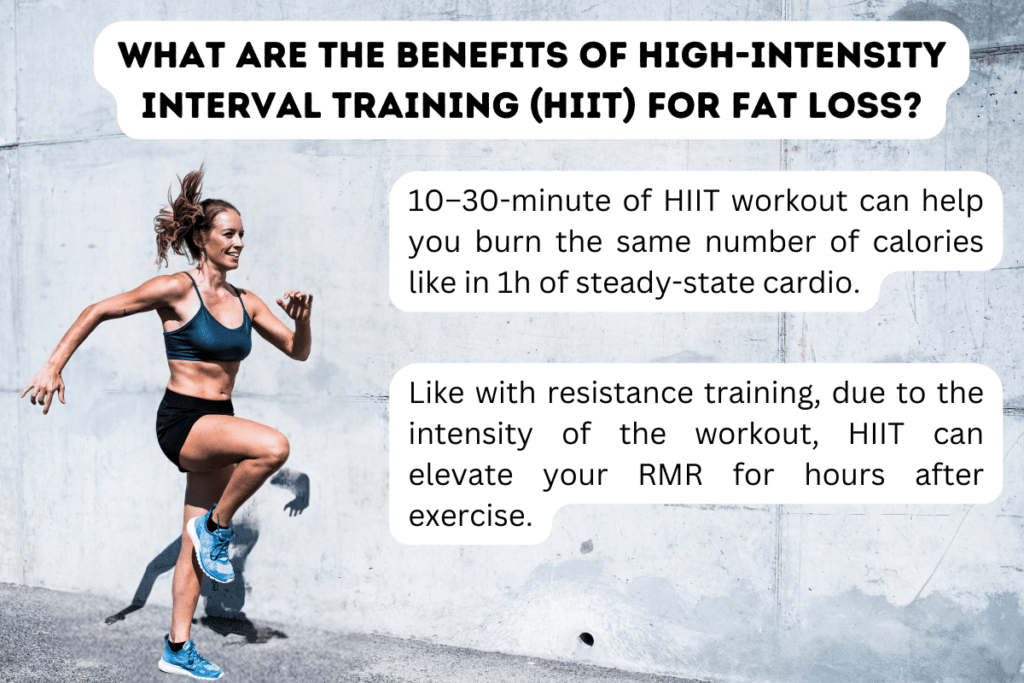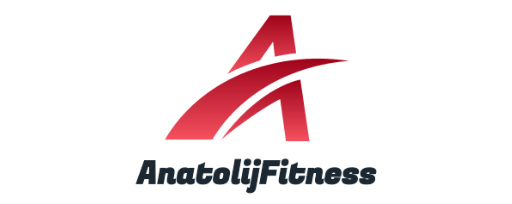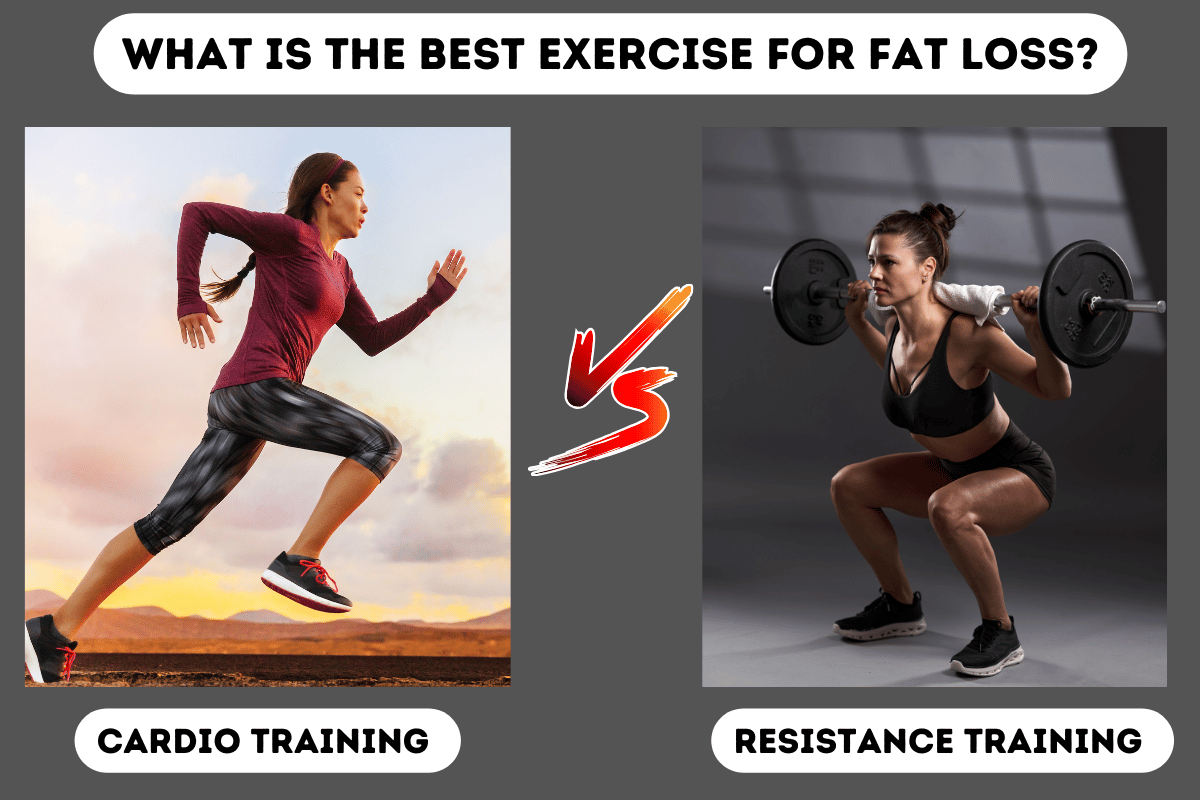This is a type of question personal trainers are getting all the time. Everybody wants to lose excessive weight as quickly as possible, and they think that somewhere there is the perfect exercise or diet that will solve all their problems once and for all. Of course, there are exercises that can help you lose weight, but unfortunately everything is not so easy. This article will discuss the benefits and drawbacks of cardio and resistance training for weight loss. According to these benefits and disadvantages, we’ll try to answer a question: “What is the best exercise to lose weight?”.
Before discussing the best exercise for fat loss, we must remind ourselves of the secret of all diets. If you have been reading my articles for a while, you should know that the secret is in calorie deficit when you are burning more energy (calories) than you consume. And if you want to lose weight safely, without losing muscle tissue, you must reduce your calories by about 15-20% of your daily calorie intake (about 500 kcal), not more. For example, if your daily calorie intake is 2500 kcal, you must reduce them to 2000 kcal. I wrote how to do it properly in my article: “Your step-by-step weight loss program”. You can create this calorie deficit in two ways: by reducing these calories just from food alone or by reducing 250 kcal from food and another 250 kcal by increasing your physical activity. Now, let’s find out what is better for fat loss, cardio, or resistance training.
Cardio vs resistance training for fat loss.
The most significant benefit of cardiovascular training is that it burns more calories per session than resistance training. For example, during 30 minutes of moderate-intensity cardio, you could burn 300 kcal, but during resistance training, you would burn just 100-150 kcal for the same duration of time. The disadvantage of cardio is that, together with fat, you are losing some muscle. If your goal is to have muscles, steady-state cardio (activity done at low intensity for a longer duration) is not the best way to lose fat and save muscles. When you are doing steady-state cardio, you are sending a message to your body that you need to be fit enough to run for a long time. But here is the thing – muscles are heavy, and the more you have them, the more difficult it is for your body to run these long distances. That is why your body will be interested in burning some muscle to make running long distances easier.
As to resistance training, the most significant benefit for fat loss is that you are burning more calories at rest when you already left the gym. For about 36 hours after resistance training, your resting metabolic rate (RMR) increases. This is happening because your muscles need lots of energy and nutrients. After your resistance training (where you are breaking muscle tissue), your muscles will be damaged more than after cardio training, and they will need more time and nutrients to recover. This is probably the reason why your resting metabolic rate increases. Also, the more muscles you have, the more energy and nutrients they need. Increased muscle size will increase your RMR as well. So, the more muscle mass you have, the more calories you are burning at rest.
The important thing to mention is that the extent and duration of the after-burn effect, when your RMR increases after resistance training, is determined by the type, length, and intensity of exercise. Longer-lasting exercise that uses multiple large muscles, performed to or near fatigue, results in higher and longer-lasting after-burn. This means that exercises like deadlifts and squats (which are the most energy-demanding) will be the best for fat loss.
The minus of resistance training for fat loss, especially for me, is that sometimes you become stronger from resistance training but still stay fat. For me, resistance training alone doesn’t work as effectively as cardio. It may be because you are not burning many calories during training sessions, or resistance training increases your appetite more, and it is difficult to exercise in a calorie deficit. All in all, as you can see, cardio training and resistance training have their pluses and minuses. For me, the best way to start losing weight is to do cardiovascular and resistance training together. You can do cardio and resistance training together in one session, but I prefer to do it on separate days. You can also do cardio in the morning in a fast state, and in the evening, you can do resistance training. We will discuss how better to organize your training at the end of this article. Now, we need to mention one more type of training, which, according to science, is the best for weight loss – high-intensity interval training (HIIT).
High Intensity Interval Training (HIIT) for fat loss.
High-intensity interval training (HIIT) is a training which involves short bursts of very intense exercise alternated with low-intensity recovery periods. Mostly HIIT workout takes about 10-30 minutes and can include different exercises, including running, spinning, jump roping or other body weight exercises. For example, if you decide to do a HIIT workout on a treadmill, you can run at a high speed for 30 seconds, then do 30 seconds of quick walking. Then repeat again till you finish your 10-30 min workout. There are many other combinations of rest and work periods. You can do exercise as quickly as you can for 20 seconds and 40-second rest (if you are a beginner), or 40-second high-intensity training and just 20-second rest (if you are advanced). Here, everything depends on your fitness level.

One of the most significant advantages of HIIT is that you can burn more calories in minimal time, so no more excuses. According to research, just a 10–30-minute HIIT workout can help you burn the same number of calories as in 1h of steady-state cardio. Moreover, HIIT training can help you burn calories even after you’re done exercising. Like resistance training, due to the intensity of the workout, HIIT can elevate your RMR for hours after exercise. Also, there is an opinion that HIIT could shift the body’s metabolism toward using more fat for energy rather than carbs. Excellent benefits, don’t you think?
Importance of your daily physical activity for fat loss.
Some people think that to lose weight, they need just go to the gym. They think going to the gym is enough and after they can lie in bed, watch TV, eat crisps, and not be active anymore, they will still lose weight. That’s wrong. It is very important what are you doing after gym as well. There is a formula that 70% of our energy needs go on resting metabolic rate (RMR), another 10% go on digestion, 15% of our energy needs would go on our daily physical activities, and just 5% we are burning by going to the gym. According to this formula, you can see how your daily activities are important for fat loss. The best daily activities to burn more calories would be walking instead of driving or taking the bus, eventually aiming to achieve 10,000 steps a day; Cycling to school, college, or work instead of using a car; Using stairs instead of a lift or cleaning your house more often, gardening.
I believe walking is one of the best ways to burn more calories during the day. According to Stan Efferding (author of the book: “The Vertical Diet”), 10-minute walks done several times a day (especially after your meal) is very effective for increasing insulin sensitivity by 30%, reducing high blood pressure, lowering high blood sugar, reducing insulin and of course weight loss. Walking would be especially beneficial for overweight, obese, and unfit people because, for them, this activity is more achievable and manageable. Moreover, you can walk anywhere and anytime. You can read more about the importance of daily activities in my article: “What are the benefits of daily physical activity?”.
What is the best exercise for fat loss?
Finally, we get to the main question of the day: “What is the best exercise for a fat loss”? And as you can see, answer is not very easy. First of all, to lose weight, you need a combination of a proper diet and exercise. Just exercises may not work. As to diet, if you want to lose weight safely, without losing muscle tissue, you must reduce your calories on about 15-20% of your daily calorie intake (about 500 kcal), not more. For example, if your daily calorie intake is 2500 kcal, you must reduce them to 2000 kcal. I wrote how to do it properly in my article: “Step-by-step plan for weight loss”.
As to training, the best for fat loss is combination of cardio and resistance training. Using just steady-state cardio (activity done at low intensity for a longer time) is not the best idea because you can burn some muscle. The best cardio would be HIIT training. It would take less time to burn the same number of calories, plus HIIT training would help you burn calories even after you’re done exercising. Also, we need more muscles to increase RMR. The more muscle mass you have, the more calories you are burning at rest. HIIT training can help you to build muscles as well, but it’s not so affective like resistance training. That being said, the best fat-loss exercises are HIIT training with a combination of resistance training. Now, how can we organize such a session?
The best way is to do this training session separately. You can do a short (15-20 min) HIIT session in the morning in a fasted state and resistance training in the evening. Just remember, if you are training in a fasted state, you probably don’t have enough glycogen in your muscles, and too intense training can burn your muscles. So, you can still do HIIT training, but in a fasted state, reduce the intensity and duration a little bit. In my article, “The importance of carbohydrates for sports performance“, you can read more about the importance of glycogen for training and why it can sometimes be beneficial to exercise in a fast state. Or, for example, you can do three days per week intensive cardio training (loading with carbs before training) and 2-3 days/week resistance training. The best exercises in resistance training for fat loss are the most energy-demanding, like squats and deadlifts. Hopefully, you enjoyed this article. I wish you the best in reaching your weight loss goals!




